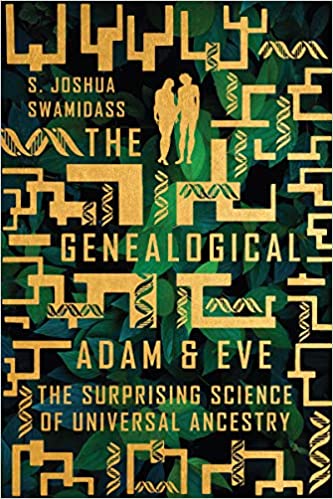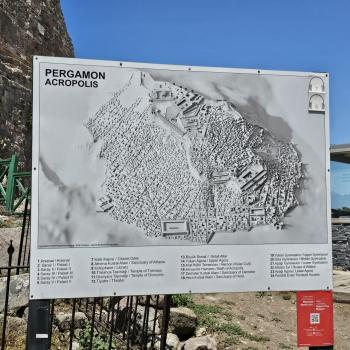Q. One of the issues I have with Bill Craig’s fine book The Quest for the Historical Adam is the willingness to take a text like Gen. 2 as basically myth, with the exception of there being a real historical Adam and Eve at some point in antiquity. He’s willing to basically dismiss the social ethos of the text which suggests a rather recent Adam and Eve during an era where religious sacrifices were offered and crops were grown, in order to place Adam and Eve with Heidelberg man some hundreds of thousands of years B.C. It seems to me that this basically doesn’t work with either Gen. 2-3 or what follows it. I gather you also favor an Adam and Eve who are not from hundreds of thousands of years B.C. Why do you see this as the more viable view?
A. The good news is that both an ancient and a recent Adam and Eve, can be consistent with mainstream science. So, which one makes more sense? That’s the debate we are rejoining anew. Craig’s book makes the best case he can for an ancient Adam and Eve. For him, and other scholars like C. John Collins, placing Adam and Eve at the ancient headwaters of “humanness” is worth the cost of reading much of Genesis 1-11 as mythology.
My book, however, gravitates to a recent Adam and Eve. Until The Genealogical Adam and Eve, scholars that saw Adam and Eve as more recent had to pay a heavy tax to science. They had to let go of monogenesis, and to come up with creative readings of Romans 5:12-14. They also had to reject de novo creation of Adam and Eve. The Genealogical Adam and Eve is important, in part, because it shows that these two revisions were unnecessary. Rejecting these doctrines are not what evolutionary science requires of us.
This reconfigures the calculation. First, those that abandoned monogenesis and de novo creation due to science can reassess and reclaim that ground. Second, in light of what we know now, I suspect most Evangelical scholars will end up with some version of a recent Adam and Eve. There are several reasons I expect this will be the case.
First, most evangelicals think a “maximal” reading of the Genesis tradition makes much more sense. In this, we are aligned with the “literalist” tradition. Of course, I do not mean a naïve and rigid reading of an English translation. Instead, I mean the sensibilities and values of B.B. Warfield, Cyrus Scofield, and even Reasons to Believe and the Chicago Statements on Hermeneutics and Inerrancy.
In contrast, and aligned with the common Catholic understanding, Craig is proposing a “minimal” reading of Genesis. He discards most of early Genesis as myth, perhaps with theological meaning, but not any physical reality. But he is also sifting through to find what is the one or two things that must be true of the physical world. Then, with a great deal of flexibility, he is able to engage with science to see if there is a model that can allow him to hold those truths alongside natural history. For Craig, placing Adam and Eve at the headwaters of “humanness” is worth the price of reading most of Genesis 1-11 as myth. And there is a price.
I do not think this price will be worth it to most Evangelicals. With exceptions, perhaps, like C. John Collins, I don’t think most exegetes think these sorts of “minimal” readings are the right exegesis. For all the disagreements we have on the particulars (and disagreements are many) most Evangelicals see intrinsic value in understanding Genesis as playing out in the physical world. We want to avoid eisegesis and scientific concordism. All else being equal, Evangelicals usually see intrinsic value in historical readings of Scripture over mythological readings.
A recent Adam and Eve includes another big payoff here for scholars. My book moves questions about Adam and Eve from biology into archeology, where biblical scholars have been engaging productively with science for quite some time. There are a rich set of questions about how Genesis relates with everything from the rise of agriculture cities and civilizations to the peopling of the Americas, from the Gobekl Tepe to the Persian Gulf Oasis. There is a lot of low hanging fruit that comes to view by reorienting questions about Adam and Eve into this domain, where there already a deep and positive exchange between biblical studies and science.
THIS DIALOGUE CONTINUES A WEEK FROM NOW IN NOVEMBER












